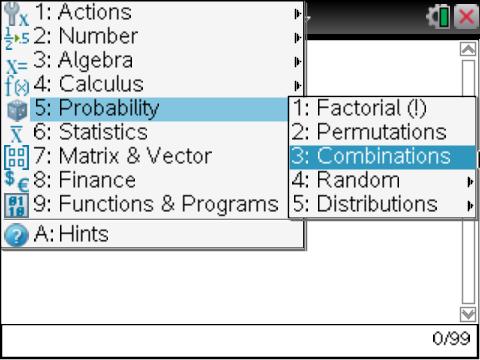
So the standard deviation is greater than or equal to 16.59 Thanks for your time. So we see that the mean, the standard deviation here is greater than or equal to 16.59 Welcome. So, because the p value is greater than the level of significance, we failed to rejected now hypothesis. What would level of significant deserve 0.1.

Okay, so here we can see the p value is zero boy, 08 That is when he dropped 8% and your test on this? Well, that's significant. Here we are looking for the alternative the alternative hypothesis. Um the me because in a way become the standard deviation, because that is what we are going to the past and I started, the creation itself will stay and the number Yes, some plain Yeah. So what leo So we are looking at the standard deviation, that is less than 16.59 So put in 16 point F nine. So here will not supply our data, but we have the starts. For a list or matrix, returns a list or matrix of factorials of the elements. So we go to many statistics then staff tests, Mhm. Thisguidebookappliesto TI-Nspiresoftware version 3.6.
#FACTORIAL ON TI NSPIRE SOFTWARE#
This guidebook provides information about powerful, advanced software from Texas Instruments: the. This entry was posted in nspire, R, RStudio, Statistics, TI nspire, TI Nspire CX CAS and tagged 2-way ANOVA, ANOVA, cbind, factor, list, R, TI nspire on Decemby gmgolem.Welcome to this lesson in this lesson, would test the standard deviation of Yes sir, a certain data. The TI-Nspire computer software for math and science. These two Factor variables essentially represent the position (or index in array’s term) of the nth data value in respect of the factor it belongs to, and can be better visualized in the following table.įinally, the 2-way ANOVA can be performed using the following commands. Two Factor variables are then created, one for club (with twelve 1’s followed by twelve 2’s), and another for brand (1 to 3 each repeating four times for each sample, and then completed by another identical sequence). Firstly we define the list variable in a fashion of the order by club (c1 = driver, c2 = five iron) then brand (b1-, b2-, b3-, with the last digit as the sample number), i.e. To enter the factorial symbol (), press math, press the right arrow key 3 times to get to the PROB tab, scroll down to the fourth option (the factorial symbol) and press enter. The below is the same TI example completed in R. To accomplish the ANOVA, factor data types are used in conjunction with list variable.

Working with ANOVA for data entry in this way is not as straightforward because dimension is required for the analysis on data stored in the list variable. For more casual data entry that command line input is suffice, raw data are usually stored into list variable using c() command. There are also other supported formats including SPSS and Excel. Unfortunately, BASIC programmers can not. Assembly programmers can switch between the two speeds with a simple command.
#FACTORIAL ON TI NSPIRE PLUS#
The newer TI-83 Plus Silver Edition and the entire TI-84 Plus series have a 15MHz clock speed, but usually run at 6MHz for compatibility with the older 83+. In R, data are usually imported from CSV file using read.csv() command. The TI-83 Plus has a clock speed of 6MHz. Using a sample from the classical TI-89 statistics guide book on determining the interaction between two factors using 2-way ANOVA, the same output is obtained from the TI nspire CX.

The data can also be named by columns and recalled from the Calculator application. Statistical functions can then be applied. In TI nspire CX, the application Lists & Spreadsheet provided a convenient Excel list interface for data input.


 0 kommentar(er)
0 kommentar(er)
